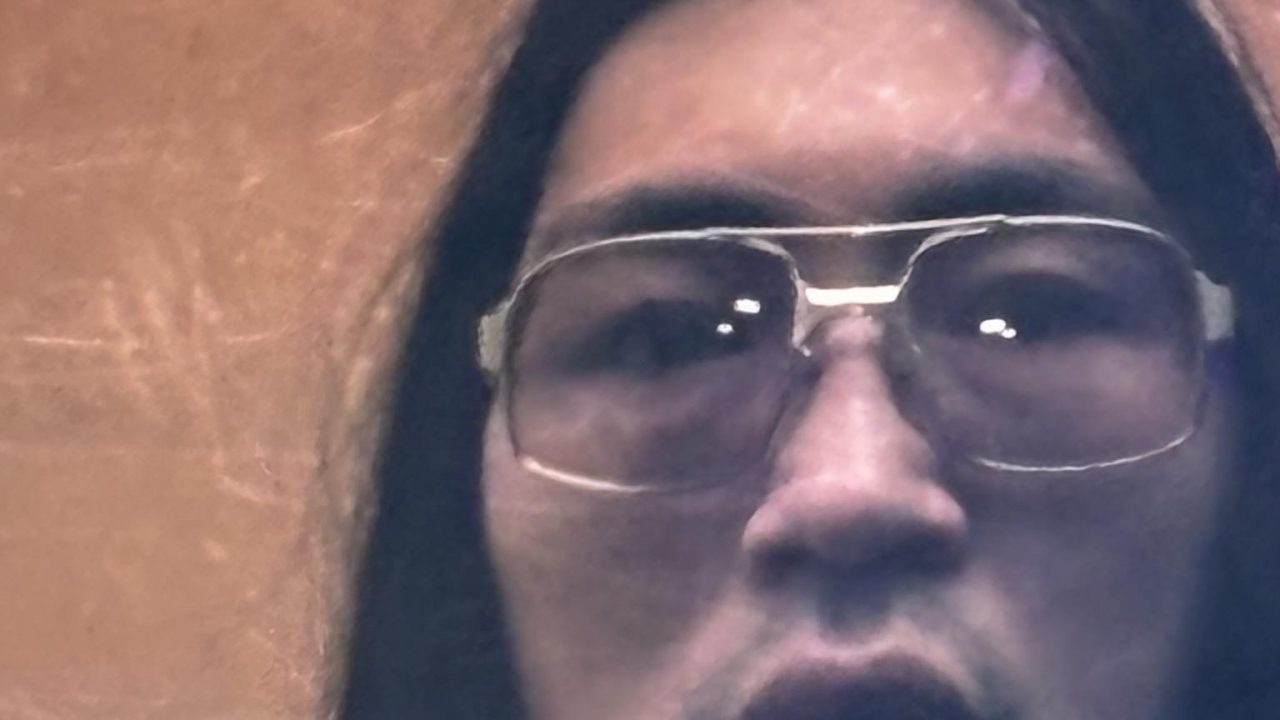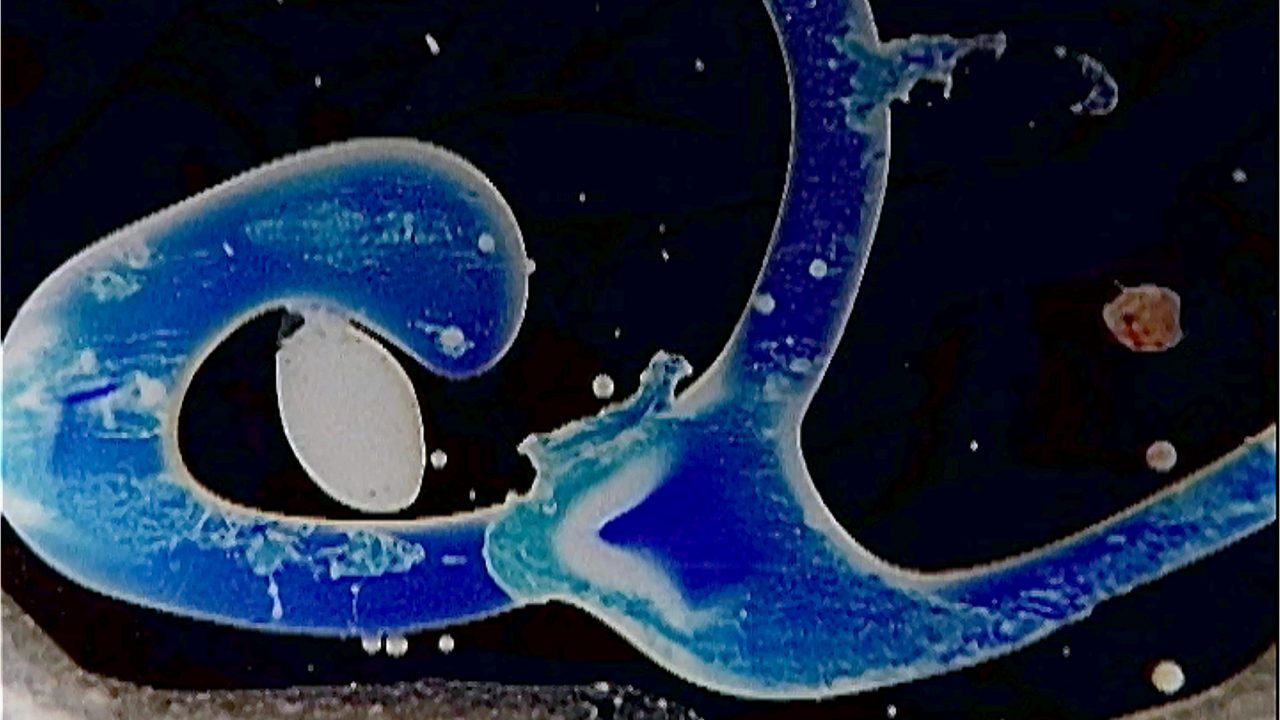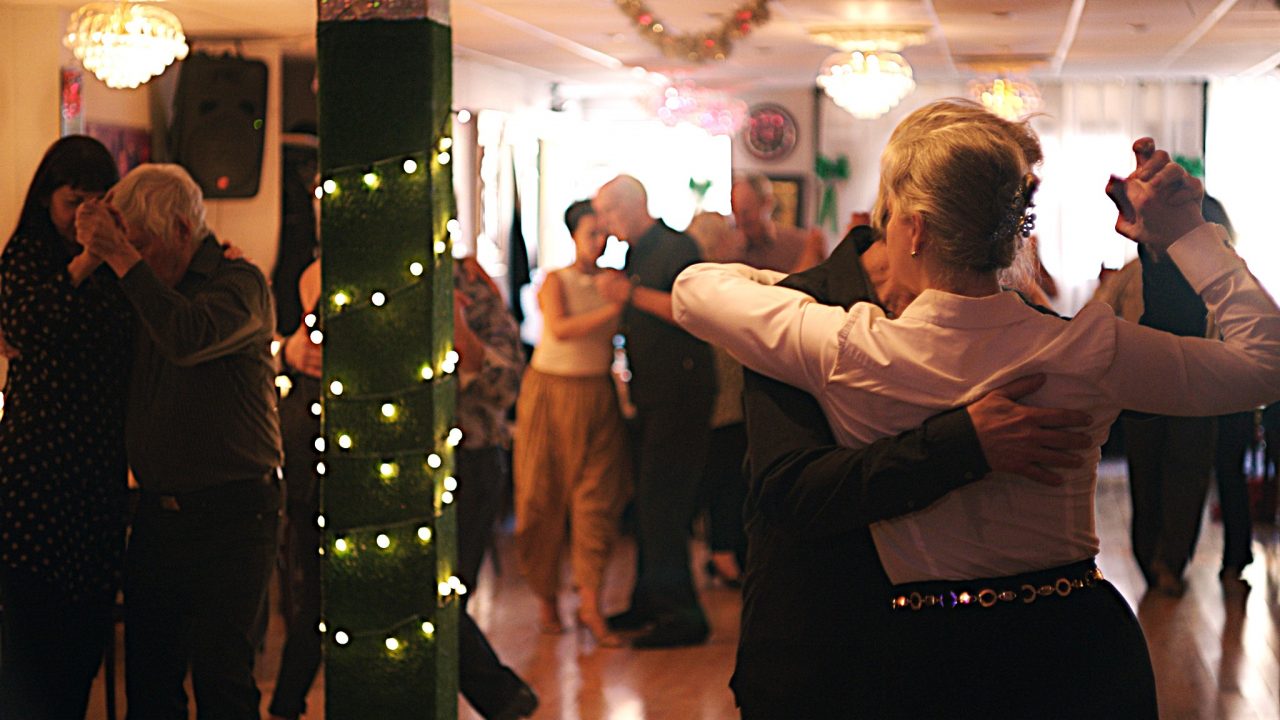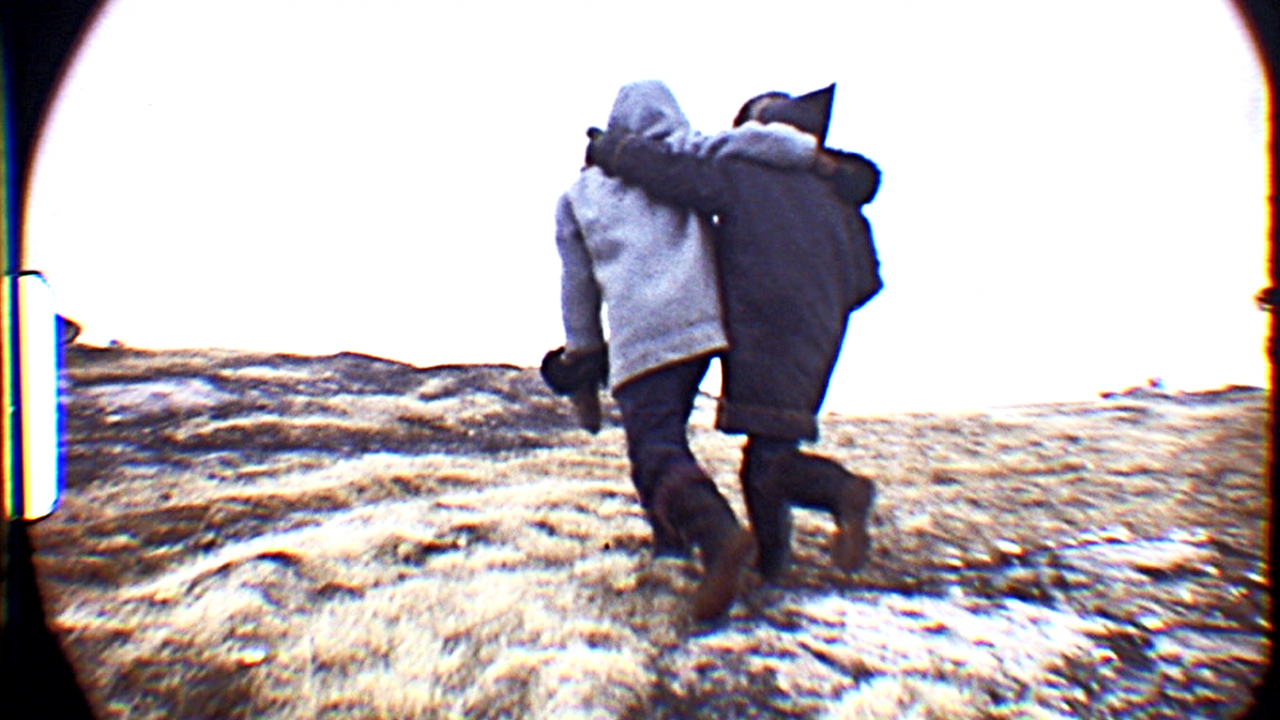
The Forgotten Reels of Nunavut’s Super 8 Workshop: Mosha Michael
The Forgotten Reels of Nunavut’s Super 8 Workshop: Mosha Michael
To continue exploring one of the most intriguing chapters of Indigenous filmmaking at the NFB, let’s now dive into the Frobisher Bay Super 8 Workshop, launched following the success of the Cape Dorset Film Animation Workshop (discussed in detail in my previous two blog posts, here).
Natsik Hunting, Mosha Michael, provided by the National Film Board of Canada
First off, I highly recommend watching Natsik Hunting (1975), a short film by Mosha Michael that clearly demonstrates the creative potential of the Frobisher Bay workshop. This seven-minute observational piece depicts a traditional Inuit seal hunt and was 27-year-old Michael’s directorial debut. Strikingly, the short contains no narration; instead, Michael’s voice and guitar compositions—in collaboration with Etulu Etidloie (a participant of the Cape Dorset workshop)—form the soundtrack of Natsik Hunting, which showcases Michael’s ability to merge cultural chronicle and artistic expression.
From Animation to a Super 8 Live-Action Workshop in Nunavut, 1975
One of the most significant reasons for the NFB’s shift from animation to live action was essentially logistical in nature: despite Tarqravit (CBC’s first Inuit TV program) agreeing to broadcast a wide range of Inuit programing—including animated and live-action shorts, or a mix of animated films, live-action portraits and interviews with locals—there were no Inuit available in Nunavut to record live-action footage on a weekly basis and provide 15 minutes of footage to the CBC (and the Sikusilarmiut Animation Studio could not physically provide 15 minutes of footage on a weekly basis to feed Tarqravit’s programming, either!).
But, recognizing both the success of the Sikusilarmiut Animation Studio and the growing need for locally produced content, the NFB decided to close down the animation studio/workshop in Baffin Island and instead established a Super 8 live-action Arctic workshop in the city of Frobisher Bay (today known as Iqaluit), supervised by Corrine Corry and Phil Schmidtz. Cape Dorset trainees Timmun Alariaq and Etulu Etidloie came to Frobisher Bay to support the new workshop participants.[i]
The NFB’s new workshop aimed to train local Inuit artists in Super 8 filmmaking—a more accessible and practical medium—to ensure a steady supply of content for CBC’s weekly programming. Launched in mid-May 1975, the workshop’s trainees included Anne Hanson, Elisapee Davidee, Buck Buck, Jamesee Temotee Mitsima, Meeka Wilson, Mark Tat-Krook, Seemeonie Michael, Nanasie Nowdlak, Ooleepeeka Gordon and Leevee Nowdluk (along with students from Nakashuk School, whose average age was 10, and students from the Gordon Robertson Education Centre, who participated during school hours).[ii]
Among these participants, Mosha Michael took on particularly multifaceted roles, serving as cinematographer, director, editor and composer for all the films, including Natsik Hunting (see above) and his follow-up film The Hunters/Asivaqtiin (1977). The latter documented a three-week Arctic hunting trip organized as a rehabilitative program for young offenders and their families. Featuring an original score by Kowmageak Arngnakolak and Michael himself, the film has since become a landmark of NFB-produced Indigenous cinema.
The Hunters (Asivaqtiin), Mosha Michael, provided by the National Film Board of Canada
Mosha Michael
Although some NFB documents state that several films were made during the workshop[iii] [iv] and that other titles were recorded or directed by Mosha Michael,[v] to date, the only works that have been recovered from the initiative are the Michael films featured in this blog post.[vi]
Born in 1948 in an outpost camp near Apex (Niaqunngut), just outside Iqaluit, Michael is considered to be the first Inuit documentarian. A residential school Survivor, he mastered nearly every aspect of filmmaking—serving as researcher, scriptwriter, director, cinematographer, editor, narrator, composer and even performer.
Recently discovered, restored and digitized, Michael’s third and final NFB production, Whale Hunting/Qilaluganiatut (1977), depicts the journey of six Inuit hunting for beluga whale near Iqaluit, with an original score that again features music and songs by Arngnakolak and the director. All three of Michael’s NFB projects were shot on a Super 8 and offer the rare perspectives of a local filmmaker on Baffin Island landscapes and customs in the 1970s.
Whale Hunting (Qilaluganiatut), Mosha Michael, provided by the National Film Board of Canada
In contrast to the Sikusilarmiut Animation Studio’s dissolution due to multiple factors, the Frobisher Bay Super 8 Workshop fell apart largely because no salaries were provided, forcing filmmakers to move on to jobs elsewhere (CBC Radio and Inuit Tapirisat).[vii] Also, Michael went on to work for the Inuit Broadcasting Corporation and, in 1985, relocated to Toronto to further pursue his directing career, registering for photography courses at Ryerson (now Toronto Metropolitan) University. Unable to continue filmmaking, he made a living as a soapstone carver until he died in 2009, and his remains were scattered across the Apex River.[viii]
The End of the Workshop and Birth of the Nunatsiakmiut Film Society: 50 Years of Inuit Cinema
The Frobisher Bay workshop ultimately dissolved, in part because on January 23, 1976, just eight months after its launch, a new opportunity emerged to expand beyond Tarqravit’s limited format. A collective of Inuit formed the Nunatsiakmiut Film Society, which aimed to create a more substantial and culturally focused television program. Unlike Tarqravit, which featured 15-minute segments, this new initiative sought to produce 30 minutes of weekly CBC programming—entirely made by Inuit filmmakers and technicians, centred on Inuit subjects, and delivered in Inuit languages. This shift marked a critical step toward greater Inuit control over media production and storytelling. The workshop (solidified under the leadership of five people: Corrine Corry as instructor/advisor, Michael and Timmun Alariaq as cinematographers, Nowdluk and Gordon doing VTR editing, and Nowdlak as production assistant) produced numerous films with NFB equipment that were primarily intended to feed Nunatsiakmiut’s CBC programming; it could be said that the NFB’s workshop did not end, but instead transformed into a production company for Nunatsiakmiut.
Three Thousand, Asinnajaq, provided by the National Film Board of Canada
The legacy of the workshops is evident today, with 50 years of NFB involvement in Nunavut cinema culminating in masterpieces like Three Thousand (2017, embedded above), Arctic Song (2021) and Nalujuk Night (2021), which have been screened worldwide and won hundreds of awards. Far more than a historical footnote, the NFB’s Nunavut workshop initiatives in the 1970s helped pave the way for Inuit cultural sovereignty and storytelling authorship.
The NFB’s Cape Dorset Film Animation Workshop and its Frobisher Super 8 Workshop sparked a dual creative movement: a new wave of Nunavut animation (exemplified by the Sikusilarmiut Animation Studio’s work) and a parallel surge in nonfiction filmmaking, as seen in Michael’s work, featured in this blog. The workshops also led to Inuit milestones: major festival screenings (in the case of the Animation Studio’s work) and awards, and television made by Inuit, for Inuit, in Inuktitut, or as an instrument for preserving their language, values and traditions (in the case of Michael’s Super 8 documentary films).
Programs like Tarqravit and the content Nunatsiakmiut produced for CBC became a blueprint for Indigenous-led broadcasting, decentralizing southern editorial control and ensuring linguistic and cultural authenticity (which perhaps planted the seed for the creation of the Inuit Broadcasting Corporation… but that’s a story for another blog post).
Most critically, these initiatives built infrastructure and trained technicians, helping local artists and producers to document Inuit life through local lenses. In short, the workshops laid the material foundation for the future of cinema in Nunavut; and you can celebrate this 50-year journey by visiting our Inuit Cinema at the NFB channel and watching some of these Northern gems!
NOTE: If you’d like to know more about Frobisher Bay Super 8 Workshop. Click on this link, “The Forgotten Reels of Nunavut’s Super 8 Workshop: An Inuit School of Cinema“
Arctic Workshop Reel 3, , provided by the National Film Board of Canada
Enjoy!
[i] NFB archives – Frobisher Bay workshop report.
[ii] ibid
[iii] i.e., Making a Sweeping Broom and Mary Alice Accordian by Elisapee Davidee, Apex – The Phase Out of an Old Summer Camp by Jamesee Temotee Mitsima, Ravens by Seemeonie Michael, Toonuk Tyme by Noah Nakashook, Creeks and Rivers by Anne Hanson, Ring Making by Buck Buck.
[iv] Documents also mentioned that workshop participants also ventured into fiction, as “dramas explaining basic legal ideas” as well as “Markoosie’s fast action comic rushes,” are listed in the type of projects produced during the Super 8 workshop.
[v] i.e., Peregrine Falcons, Carving Aoupalota and Ilevik Making Whip; Michael also served as the local cameraperson for an unspecified number of CBC programs. (https://www.isuma.tv/sites/default/files/attachments/180817_isuma-ibc_channel-video_desc-shareable.pdf)
[vi] Elisapee Davidee became a host at CBC.
[vii] NFB archives – Arctic workshop report.
[viii] Kira Wronska Dorward, “Inuk filmmaker Mosha Michael: ‘Something to look at,’” June 17, 2024, Nunavut News



